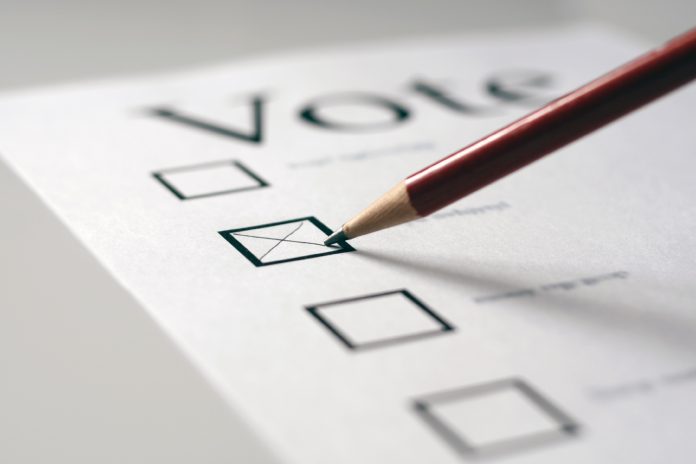Despite a long history of student participation in activism and government, the youth vote in Canada and the province has been undervalued for years. This has resulted in party platforms not including vital student issues and concerns. Even with the NDP-Green coalition, which was greeted with much hope for reform to social issues, little has been done thus far to support the needs of students, as seen through the 2018 BC Budget. This means students are returning to university and colleges across the province with higher tuition fees and looming interest on loans.
However, this could dramatically change with the coming referendum for proportional representation in the fall. From October 22 to November 30, residents of BC will be participating in a mail-in referendum on electoral reform. This is an opportunity for us, as voters, to have our say in the most foundational part of the democratic process. It will be the third time that BC has put forward a referendum for Proportional Representation (PR), with the last one occurring in 2009. Since then, much has changed in the realm of politics, our understanding of proper representation and diversity, and the necessity of a more just society. If PR is implemented, this could bring more voices to the table that highlight the issues affecting previously marginalized groups.
The 2015 federal election saw 57 per cent of voters aged 18-24 turning out, which was up 18 per cent from 2011 and the largest increase of any age demographic. It is clear that young people want their voices heard within government. Despite this increased voter participation by the youth demographic, the electoral system and election outcome did not necessarily result in the representation of our values. The Canadian Centre for Policy Alternatives (CCPA) has observed that under our current first-past-the-post system (FPTP), political power is “concentrated into the hands of parties that do not necessarily have the support of the majority of voters—which means less representation, less accountability, and less collaboration between elected officials.” This is made clear by the votes of about 9 million Canadians in the 2015 election that had no impact on the composition of Parliament.
Those who look to maintain status quo in our electoral (and social) system declare a vote for PR to be heralding in an unstable, confusing and unpredictable government. In fact, the 90 countries which have a PR electoral system (which include Norway, Sweden, and New Zealand), are often considered the most progressive and stable governments. Instead of the back-and-forth of our (basically) two-party system – with one party working to eliminate the policies instituted by the previous party – elected representatives must have ongoing, collaborative conversations to create public policy that meets the needs of their constituents.
Moreover, the history of democratic systems in BC and Canada are ones of change, such as the granting of rights to vote for women (1916) and Indigenous people (1960), with opponents to these changes claiming these rights would dilute democracy. Furthermore, the stance taken by those advocating for FPTP is an insult to BC voters and their investment in government decisions. Though many have been jaded and disenfranchised by our current system, students on campus and Nanaimo community members are interested in better understanding the political system and in having a government that works for them. After years of strategic and fear-based voting, we deserve to be liberated to vote for our values and a government that represents us.
It is becoming increasingly clear how intersectional student issues are moving beyond education affordability to issues of housing, mental health services, and the environment. These are issues we all share as a provincial community. It makes sense for us and others to have an electoral system that is able to bring multiple perspectives and voices to the table. Now is the time for everyone to become a student. Learn about how each system works, ask critical questions (like who is against PR and why?), and make an educated decision about how our government functions for us. The only thing stopping us from this is misinformation and fear.
On September 25th, VIU Students’ Union will be hosting a Political Engagement Forum with Seth Klein, Executive Director of the Canadian Centre for Policy Alternatives making the case for proportional representation. A panel discussion on housing solutions for Nanaimo will follow with representatives from the City of Nanaimo, Nanaimo Women’s Centre and VIU Residences. The event will take place in the Malaspina Theatre from 6:30-9:00 and is an event open and free to the public. Please RSVP at http://show.ps/l/ad909dba/ for seats and refreshments.

An example ballot showcasing the two questions voters will be asked.
Between October 22 and November 30, BC voters will be able to vote in a mail-in referendum.
To vote you must be:
- A Canadian citizen
- 18 years or older after November 30, 2018
- A resident of BC at least 6 months prior to November 30, 2018
The options for proportional representations on the ballot will be:
- Mixed Member has voters elect 60% of MLAs from their ridings, and the other 40% from regional party lists, such that each party gets a number of seats that corresponds to their share of the popular vote.
- Dual Member would see parties nominate two candidates for each riding. The first seat will go to the first candidate of the party with the most votes; the second seat would be allocated based on the provincial and local popular vote.
- Rural-Urban is a mixed system in which rural MLAs would be elected using the Mixed Member model above, and urban ridings would be combined and elect five to seven MLAs by ranking candidates in order of preference.

